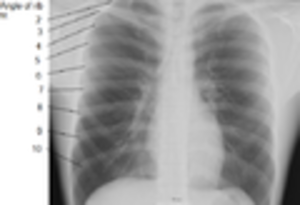Chest pain is always a symptom of concern for obvious reasons; but, fortunately, not all chest pain is a sign of an impending heart attack. In fact, one of the more common causes of pain in the chest region is a condition known as costochondritis. Chest costochondritis is the cause of chest pain in around three out of ten cases of people who experience this symptom. What exactly is costochondritis and how is it treated?
What is Chest Costochondritis?
The bony structure of the chest is composed of the sternum – the structure in the middle of the chest – and the ribs which attach to it. The area where the sternum and ribs meet is covered by a layer of cartilage which gives the chest added flexibility – allowing it to move more freely during inspiration and expiration. Costochondritis occurs when this cartilage becomes painful and inflamed.
How Does a Person Get Costochondritis?
The exact cause of this condition isn’t known, but it’s often associated with overuse and repeated trauma such as heavy lifting and is a frequent cause of chest pain in athletes. Some cases are also believed to be caused by viruses. This condition is more commonly seen in women and people over the age of forty.
How Do You Know if You Have Chest Costochondritis?
The most prominent symptom most people experience with costochondritis is chest wall pain that gets worse with movement and with deep breathing or sighing. In severe cases, it can be mistaken for heart-related chest pain which is why chest pain always needs evaluation if the diagnosis is in question – particularly in an older person or a person at high risk for heart disease. Costochondritis is usually diagnosed on the basis of physical exam, although a EKG or cardiac workup and a chest x-ray to rule out lung problems may be needed in cases that aren’t clear cut. On exam, the chest discomfort is almost always made worse by applying pressure to the affected cartilages which is one way your doctor can tell that you have it.
What’s the Best Treatment for Chest Costochondritis?
Once you’ve seen a doctor and have ruled out heart problems and other more serious causes of chest pain, the goal should be to reduce inflammation in the affected cartilages. Most doctors prescribe some sort of non-steroidal anti-inflammatory for this. Although these medications work well, they can cause stomach irritation and increase the risk of gastrointestinal problems, heart attack, and kidney damage if used long term. Use them only as long as necessary. If you can’t take NSAID, tart cherries are a food with natural anti-inflammatory properties. You can read about them here. Applying heat and doing gentle stretching exercises can also help reduce pain and promote healing.
How Long Does Chest Costochondritis Last?
Costochondritis can last for several weeks or several months in severe cases. When it fails to go away after a few weeks, it’s considered to be chronic and may need further evaluation and workup to rule out other underlying causes.
References:
http://emedicine.medscape.com/article/808554-overview




